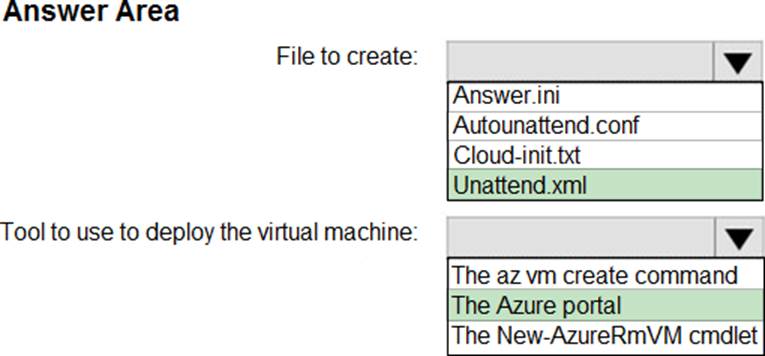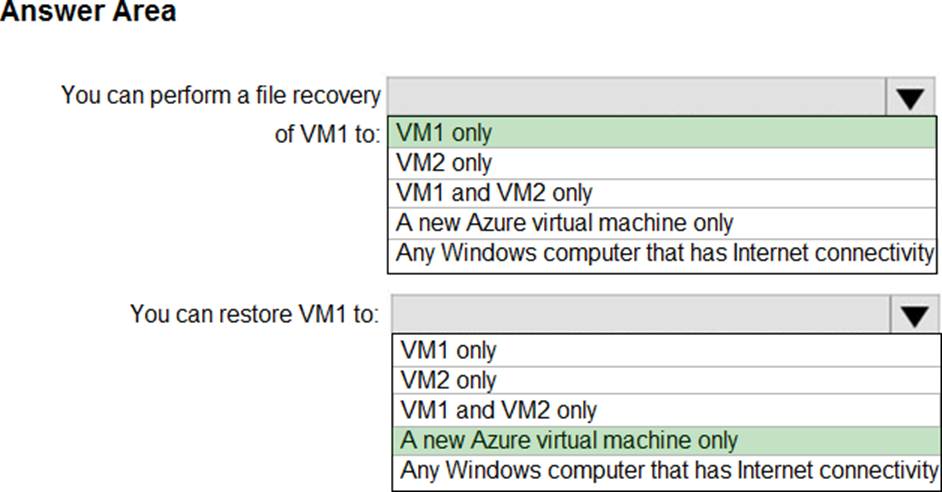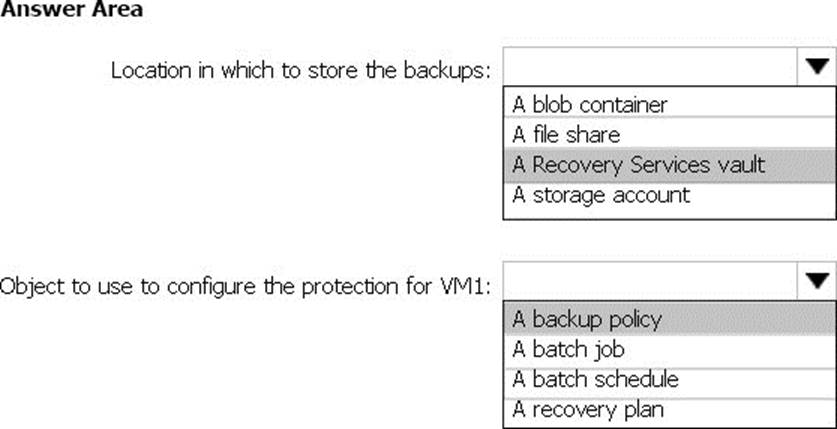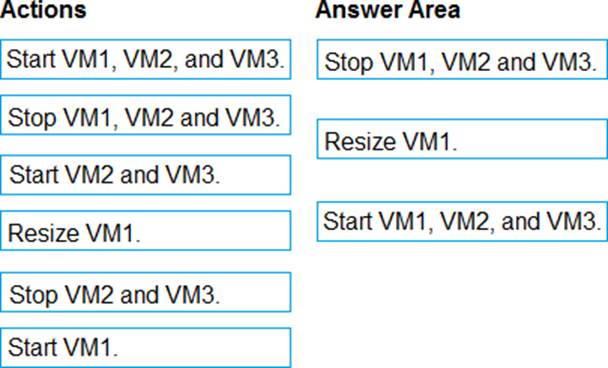Microsoft AZ-103 Microsoft Azure Administrator Online Training
Microsoft AZ-103 Online Training
The questions for AZ-103 were last updated at Dec 17,2025.
- Exam Code: AZ-103
- Exam Name: Microsoft Azure Administrator
- Certification Provider: Microsoft
- Latest update: Dec 17,2025
HOTSPOT
You have an Azure subscription named Subscription1. You plan to deploy an Ubuntu Server virtual machine named VM1 to Subscription1. You need to perform a custom deployment of the virtual machine. A specific trusted root certification authority (CA) must be added during the deployment.
What should you do? To answer, select the appropriate options in the answer area. NOTE: Each correct selection is worth one point.
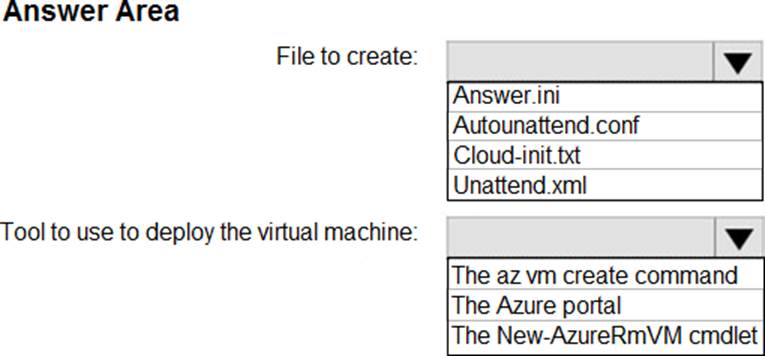
You have an Azure subscription named Subscription1. Subscription1 contains a virtual machine named VM1.
You have a computer named Computer1 that runs Windows 10. Computer1 is connected to the Internet.
You add a network interface named Interface1 to VM1 as shown in the exhibit (Click the Exhibit button.)
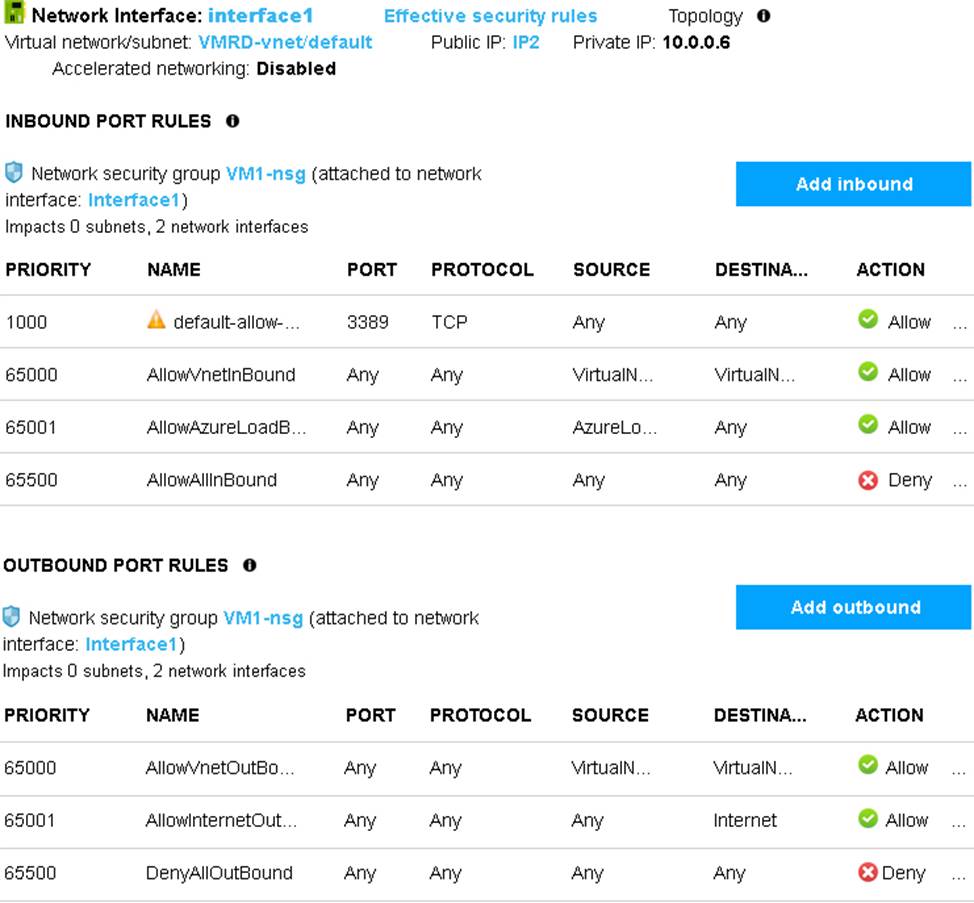
From Computer1, you attempt to connect to VM1 by using Remote Desktop, but the connection fails.
You need to establish a Remote Desktop connection to VM1.
What should you do first?
- A . Start VM1.
- B . Attach a network interface.
- C . Delete the DenyAllOutBound outbound port rule.
- D . Delete the DenyAllInBound inbound port rule.
You plan to automate the deployment of a virtual machine scale set that uses the Windows Server 2016 Datacenter image.
You need to ensure that when the scale set virtual machines are provisioned, they have web server components installed.
Which two actions should you perform? Each correct answer presents part of the solution. NOTE Each correct selection is worth one point.
- A . Modify the extensionProfile section of the Azure Resource Manager template.
- B . Create a new virtual machine scale set in the Azure portal.
- C . Create an Azure policy.
- D . Create an automation account.
- E . Upload a configuration script.
You have an Azure subscription that contains a virtual machine named VM1. VM1 hosts a line-ofbusiness application that is available 24 hours a day. VM1 has one network interface and one managed disk. VM1 uses the D4s v3 size.
You plan to make the following changes to VM1:
– Change the size to D8s v3.
– Add a 500-GB managed disk.
– Add the Puppet Agent extension.
– Attach an additional network interface.
Which change will cause downtime for VM1?
- A . Add a 500-GB managed disk.
- B . Attach an additional network interface.
- C . Add the Puppet Agent extension.
- D . Change the size to D8s v3.
HOTSPOT
You have an Azure subscription named Subscription1. Subscription1 contains two Azure virtual machines named VM1 and VM2. VM1 and VM2 run Windows Server 2016. VM1 is backed up daily by Azure Backup without using the Azure Backup agent. VM1 is affected by ransomware that encrypts data.
You need to restore the latest backup of VM1.
To which location can you restore the backup? To answer, select the appropriate options in the answer area. NOTE: Each correct selection is worth one point.
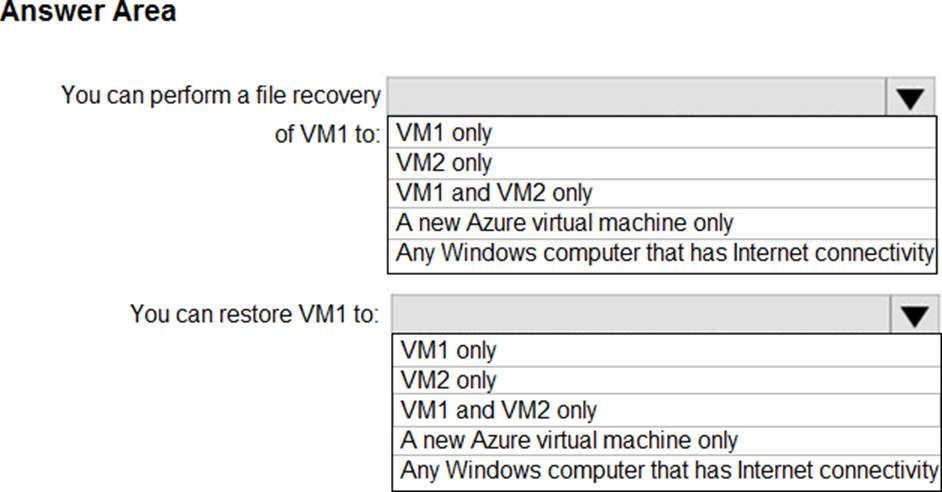
HOTSPOT
You purchase a new Azure subscription named Subscription1. You create a virtual machine named VM1 in Subscription1. VM1 is not protected by Azure Backup. You need to protect VM1 by using Azure Backup. Backups must be created at 01:00 and stored for 30 days.
What should you do? To answer, select the appropriate options in the answer area. NOTE: Each correct selection is worth one point.
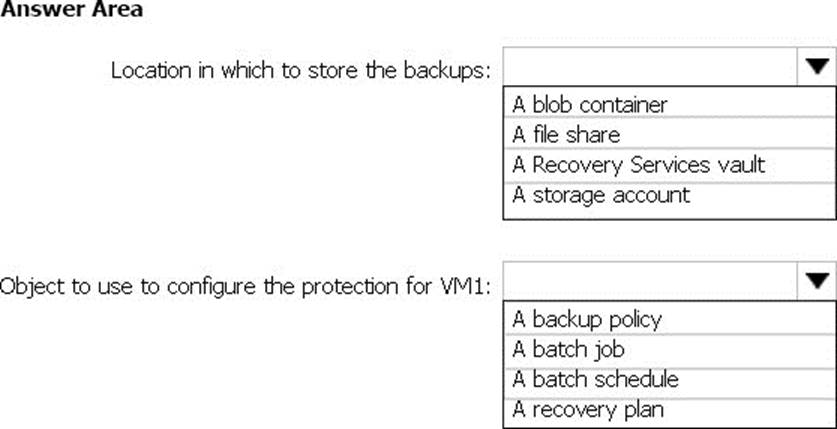
DRAG DROP
You have an availability set named AS1 that contains three virtual machines named VM1, VM2, and VM3.
You attempt to reconfigure VM1 to use a larger size. The operation fails and you receive an allocation failure message.
You need to ensure that the resize operation succeeds.
Which three actions should you perform in sequence? To answer, move the appropriate actions from the list of actions to the answer area and arrange them in the correct order.
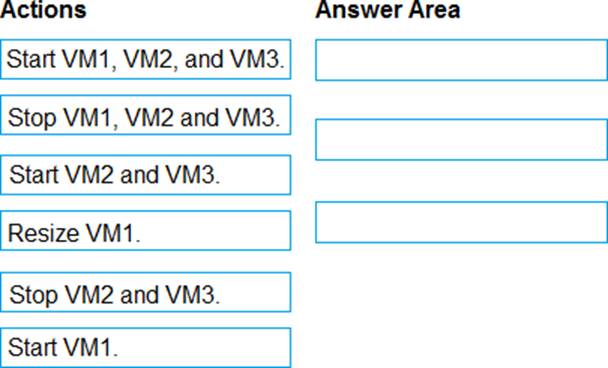
Note: This question is part of a series of questions that present the same scenario. Each question in the series contains a unique solution that might meet the stated goals. Some question sets might have more than one correct solution, while others might not have a correct solution.
After you answer a question in this section, you will NOT be able to return to it. As a result, these
questions will not appear in the review screen. You have an Azure virtual machine named VM1. VM1 was deployed by using a custom Azure Resource Manager template named ARM1.json.
You receive a notification that VM1 will be affected by maintenance. You need to move VM1 to a different host immediately.
Solution: From the Redeploy blade, you click Redeploy.
Does this meet the goal?
- A . Yes
- B . No
Note: This question is part of a series of questions that present the same scenario. Each question in the series contains a unique solution that might meet the stated goals. Some question sets might have more than one correct solution, while others might not have a correct solution.
After you answer a question in this section, you will NOT be able to return to it. As a result, these
questions will not appear in the review screen. You have an Azure virtual machine named VM1. VM1 was deployed by using a custom Azure Resource Manager template named ARM1.json.
You receive a notification that VM1 will be affected by maintenance. You need to move VM1 to a different host immediately.
Solution: From the Overview blade, you move the virtual machine to a different resource group.
Does this meet the goal?
- A . Yes
- B . No
DRAG DROP
You have an Azure subscription. The subscription includes a virtual network named VNet1. Currently, VNet1 does not contain any subnets.
You plan to create subnets on VNet1 and to use application security groups to restrict the traffic between the subnets. You need to create the application security groups and to assign them to the subnets.
Which four cmdlets should you run in sequence? To answer, move the appropriate cmdlets from the list of cmdlets to the answer area and arrange them in the correct order.

Latest AZ-103 Dumps Valid Version with 369 Q&As
Latest And Valid Q&A | Instant Download | Once Fail, Full Refund

